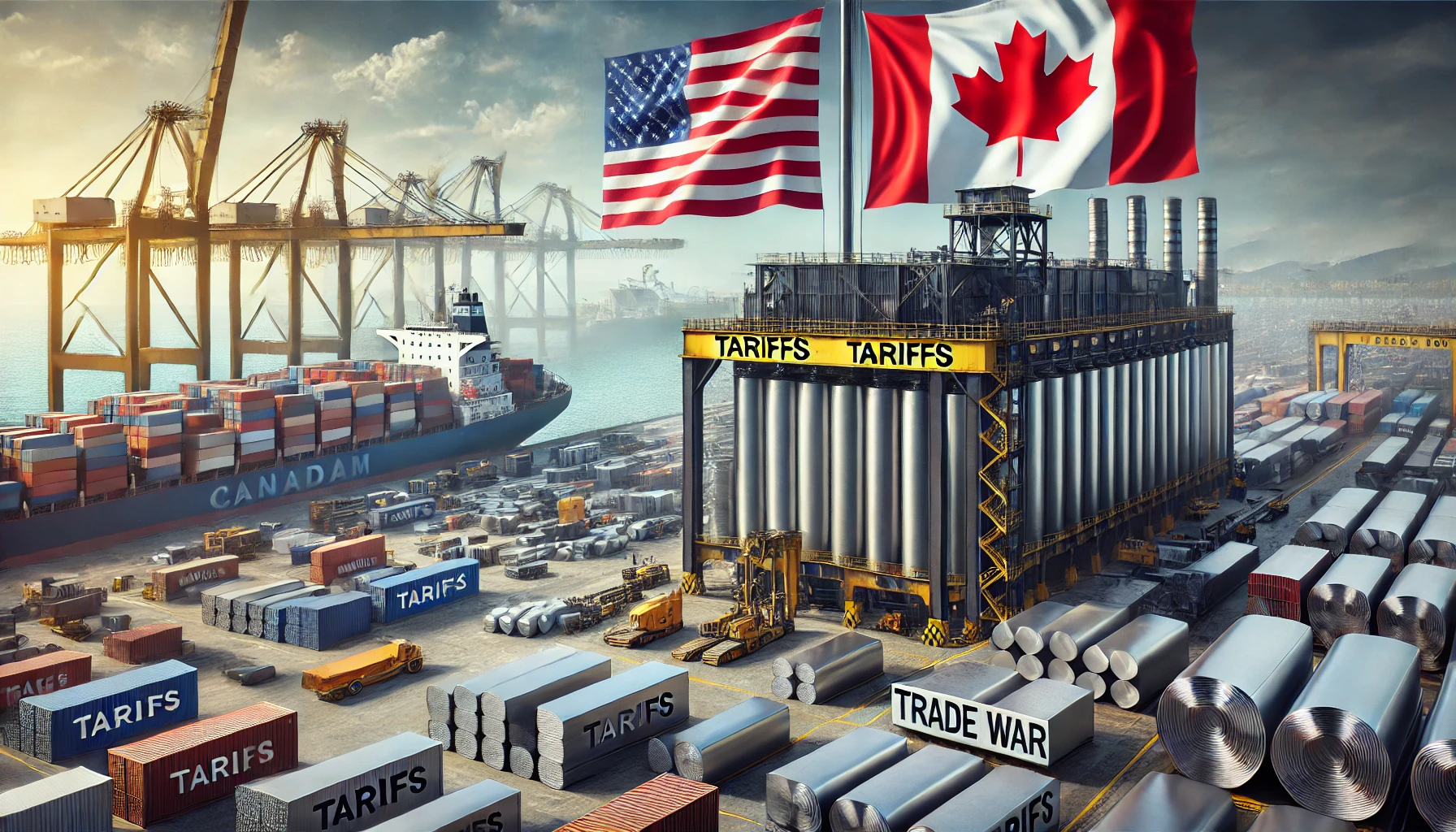Physical Address
304 North Cardinal St.
Dorchester Center, MA 02124
Physical Address
304 North Cardinal St.
Dorchester Center, MA 02124

Trump's 2025 tariff hike on Canadian steel and aluminum from 25% to 50% sparks a major U.S.-Canada trade war. Explore the economic impact, supply chain disruptions, job losses, and Canada's retaliation, plus insights into global trade consequences and political fallout.
On March 11, 2025, former U.S. President Donald Trump announced a significant escalation in the trade dispute with Canada by increasing tariffs on steel and aluminum imports from 25% to 50%, effective March 12, 2025. This move is widely seen as a direct response to Ontario’s imposition of a 25% tax on electricity exports to the United States. The sharp increase in tariffs is expected to have profound economic and geopolitical consequences, impacting supply chains, manufacturing costs, employment rates, and broader international trade relations.
This article will provide a detailed analysis of the tariff escalation, its historical context, economic implications, government responses, and broader geopolitical ramifications. Additionally, we will examine how these tariffs compare to past trade disputes and explore possible future scenarios. For further insights into Trump’s broader economic policies, check out our in-depth coverage of the U.S.-China trade war and Trump’s March 4, 2025, policy announcements.
Trump’s trade policies have consistently focused on protectionism, with a goal of reducing the U.S. trade deficit and safeguarding American industries. The latest tariff hike is not an isolated policy shift but part of a broader strategy aimed at leveraging tariffs as an economic and political tool.
The increase in tariffs on Canadian steel and aluminum follows a similar pattern seen in Trump’s first term, when he imposed Section 232 tariffs on steel and aluminum imports from multiple countries, citing national security concerns. The current escalation, however, is unique in its direct retaliation to Ontario’s electricity tax, which was announced on March 10, 2025. The province’s new tax targeted U.S. electricity imports, affecting 1.5 million homes and businesses in Minnesota, Michigan, and New York. Ontario Premier Doug Ford defended the move as a necessary measure to counteract U.S. trade policies.
This tit-for-tat trade war is not without precedent. Similar trade disputes have occurred between the U.S. and Canada, most notably in the softwood lumber conflict and dairy tariffs. However, the steel and aluminum industries are far more integrated, making the potential economic fallout significantly greater.
| Date | Action | Party | Details |
|---|---|---|---|
| February 2025 | Imposed 25% tariffs on Canadian steel, aluminum | U.S. (Trump) | Effective March 12, 2025, citing national security concerns. |
| March 4, 2025 | Imposed 25% tax on electricity exports to U.S. | Canada (Ontario) | Retaliation, affecting Minnesota, Michigan, and New York. |
| March 11, 2025 | Increased tariffs to 50% on Canadian steel, aluminum | U.S. (Trump) | Effective March 12, 2025, in response to Ontario’s tax. |
| February 2, 2025 | Announced retaliatory 25% tariffs on U.S. goods | Canada (Federal) | Targeting $107 billion in trade, including beer, wine, and bourbon. |
The decision to increase tariffs has broad economic consequences, affecting industries reliant on steel and aluminum, increasing costs for manufacturers, and potentially leading to higher consumer prices. Key economic consequences include:
Many U.S. industries, including automotive, aerospace, and construction, rely heavily on Canadian steel and aluminum. Higher tariffs mean increased costs for manufacturers, which could lead to job losses and price hikes for consumers. The Aluminium Association of Canada warned that the 50% tariffs could significantly impact over 500,000 American manufacturing workers and reduce economic output by over $200 billion.
The integrated nature of U.S.-Canada trade means supply chains will face significant disruption. The Bank of Canada issued a report stating that such trade barriers could reduce GDP and slow economic growth in both countries. Additionally, global steel and aluminum markets may experience increased volatility as businesses seek alternative suppliers.
Canada has already announced plans for counter-tariffs, targeting $107 billion worth of American goods, including beer, wine, bourbon, and agricultural products. These measures are designed to pressure U.S. lawmakers by targeting industries in politically sensitive states.
The ongoing trade war could push Canada to seek alternative trading partners, reducing economic reliance on the U.S. and reshaping North American trade dynamics. Already, Canadian officials have been in talks with the European Union and Asian markets to diversify exports and secure new trade agreements.
The tariff escalation has been met with widespread criticism from U.S. and Canadian officials, as well as key industry groups:
Beyond the immediate economic consequences, this escalation has far-reaching geopolitical effects:
The tariffs put pressure on the United States-Mexico-Canada Agreement (USMCA), which was designed to foster free trade among the three nations. If the dispute escalates, it could lead to revisions or even partial withdrawals from the agreement.
The European Union and China may respond by reintroducing their own suspended tariffs on American goods, further exacerbating global trade tensions. For more on China’s response to U.S. tariffs, read our comprehensive analysis.
Canada may accelerate trade negotiations with alternative partners, such as the European Union and Asia, reducing its dependence on the U.S. market. This shift could have long-term consequences for North American trade relations.
The March 11, 2025, tariff increase on Canadian steel and aluminum is a pivotal moment in U.S.-Canada trade relations. Rooted in retaliatory measures and economic protectionism, this policy shift is likely to have widespread economic, industrial, and geopolitical consequences. With supply chains disrupted, consumer prices rising, and global markets reacting, businesses and governments alike must navigate the uncertainty ahead.
As the trade war intensifies, stakeholders will closely monitor diplomatic efforts and potential resolutions. For further updates on how Trump’s economic policies impact global trade, check out our coverage of the March 4, 2025, policy announcements.
The outcome of this dispute will shape North American trade for years to come, with the potential to redefine economic alliances and supply chain strategies on a global scale.